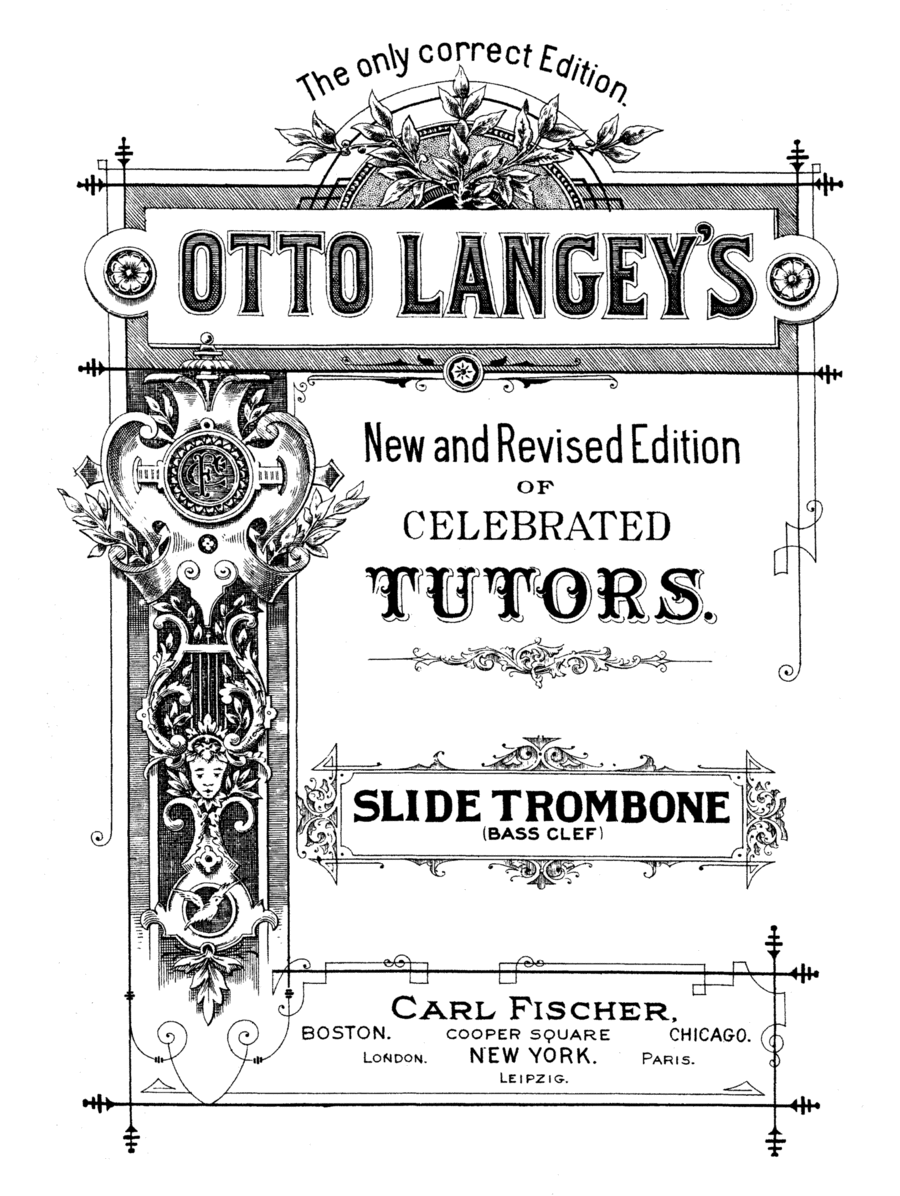Trombone Solo - Level 3 - Digital Download SKU: A0.792383 Composed by Langey, Otto. Arranged by Sauer, Ralph. 20th Century,Instructional. Individual part. 120 pages. Gordon Cherry #4820167. Published by Gordon Cherry (A0.792383). The Otto Langey Tutors were the method books of the early 20th century. Langey, a cellist, was a German immigrant to America who wrote method books for most of the major instruments. Many young instrumentalists used these books for their first studies including Mr. Sauer who in the foreword of the book describes how the Langey Method was one of his mainstays during his early musical years. I started using this method book at age 14 with my teacher Robert Harper (bass trombonist with the Philadelphia Orchestra from 1943 to 1981) and still refer to it today. The rudiments of music are clearly explained, and the scale and arpeggio exercises are excellent for avoiding the boredom that can sometimes set in with other methods. The short etudes starting on page 42 were some of Mr. Harper’s favorites. With these interesting little pieces, I learned how to play exactly what is on the page. Mr. Harper would stop me multiple times (even within the same measure!) to point out the little things that I had ignored or didn’t play correctly. Without this ability to play what is written, it is impossible to build a musical interpretation later on. In addition to Langey’s own etudes, a selection of etudes by other composers (Vaubaron, Belgke, Dieppo, Manna, Clodomir) plus some solo pieces, round out this wonderful old book. If I were limited to one etude book on the proverbial desert island, this would be it. This book of over 120 pages is suitable for performers from beginner right up to advanced. We are pleased to add this valuable book to our Vintage Brass collection.
